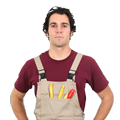How do photovoltaic panels (solar panels) work?
Almost everyone has seen solar panels on calculators, and if you think about the traditional image of a satellite, the wing-like panels attached to the satellite are also solar panels. 'Photo' means light, and 'voltaic' means energy.
But how do these panels actually absorb energy and transfer into energy that you can use in your home?
PV panels are made up of treated silicon and other materials including an antireflective coating. The silicon is a semi-conductor (like metal, not like plastic). When the light hits the silicone semi-conductor, a portion of the energy is absorbed by the panel and knocks electrons in the silicon loose which allows them to flow freely. The PV panels have an electric field that forces these 'freed' electrons to flow in a specific direction - and we all know that electrons flowing in a specific direction is known as 'current'.
In detail - how does it work?
Silicone atoms have 14 electrons in 3 different shells. Two of the shells are 'full' and the third shell is 'half empty'. So, this third shell is always looking for ways to fill itself up with 4 more electrons and so each silicon atom shares electrons with 4 of it's neighbours - sharing one electron with each neighbour.
But silicone itself isn't quite good enough - without impurities being added to the silicon structure, the electrons remain static so they don't flow 'freely'. So impurities like phosphorous or boron are added into the mix in small quantities. This means that the balance of electrons is adjusted enough to let 'freed' electrons play musical chairs looking for shells to drop into.
In a solar panel, phosphorous is added to make 'negative' cells and boron is added to make 'positive' cells, and when electrons are freed the current will flow from the negative to the positive side - current.
Once current is created (direct current - DC) it needs to be converted into alternating current (AC) so that it can be used in normal household appliances. That's where the inverter steps in.
If you're not really interested in the detail but are interested in investigating installing solar power, post a job and get advice and quotes from quality Solar professionals here.


